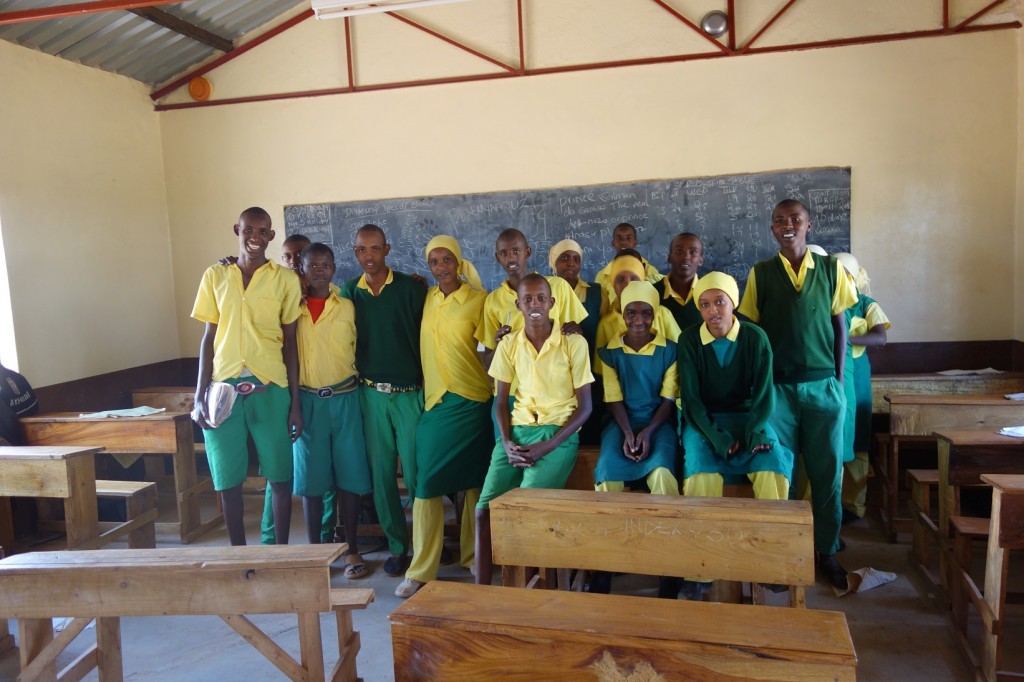I walked into the office on Friday and ran into Chris Mahoney. He is a project manager for Just a Drop, a charity that builds and maintains water projects for the tribal areas of Africa. Chris is here to fix a water system that Just a Drop had installed in Westgate, one of the NRT conservancies. In Westgate the manyatta (village) is six kilometers from the river. It is the children’s job to go fetch the water each day. Chris was especially interested in this project because the river is a dangerous place. As he explained, “The village loses 3-4 children each year to wildlife. In the year before we installed the water pump at least one child was killed by an elephant and just the month before we put it in a six year old girl was taken by a crocodile.” Installing a pump and piping system had eliminated the long trek and kept the children safe from the elephants and crocodiles, but now the pump needed repair.
Chris stopped me as I walked by. “You’re the head of NRT’s education project,” he said. “I have a case study for you.” The day before, Chris and Dan (NRT’s Chief Science Officer) had been at Westgate when they were approached by the school’s Head Teacher. There was a problem. The Head Teacher wanted to talk about two girls in eighth grade. They were two of his sharpest students and he expected them to do very well on the KCPE (the Kenyan National Exam that determines placement for secondary school). They are both 13 years old.

Eighth Grade Class at Kilimani Primary School (Not the one in this post). Do the girls look ready to be wives and mothers?
One girl was an orphan and her brother had just told her that he could not afford to send her to secondary school. Was there any way that Chris or Dan could arrange a bursary (scholarship) for her? Without it the girl would become another lost child, which was a shame given how smart she was.
The other girl had a similar but more urgent problem. Her father had also explained that he could not afford to send her to secondary school. Instead he had arranged a marriage for her. She was to get married in November (this month) and not even take the KCPE. She was now facing a life essentially of slavery, keeping house in a dirt floored hut, herding goats, and according to Chris, “being shagged senseless by a guy 10 to 15 years older than her at the age of 13.” She wants to be a doctor.
The Head Teacher had talked with the father about the girl’s potential. The father arrogantly responded that he was her father and knew what was best for her and girls don’t need to be educated. If she refused to follow her father’s orders and get married he would disown her. That would leave her without any support whatsoever, no family, no house, no food, and no hope.
If the girl was to go home from school the head teacher feared that she would not return. The father would hide her away until she showed up a month later married. So Dan and Chris told him to keep the girl at school. He immediately moved her into the girls’ dormitory where she now resides until the school term ends in late November. What happens after the term ends is up in the air. Dan and Chris are trying to find money for a bursary for her but…
Ultimately, I am confident that these two young women will get bursaries. But they were fortunate. They had a caring and attentive Head Teacher and Chris and Dan just happened to be at the school when the situation became a crises. But what about the hundreds or possibly thousands of similar cases each year that don’t come to anyone’s attention?
Kenyan law says that the family cannot force their daughters to marry young. If the girl wants to continue with school she has the right. However, it is common for the family to disown a child who refuses to follow the father’s instructions. This leaves the child with the right but not the ability to continue on with school. Faced with these choices, most go along with the family’s wishes. It is their cultural norm and, in truth, leaves them no worse off than their mothers and grandmothers. But it closes the door on other possible futures.

How are funds for bursaries solicited and collected. I also wondered if there is a follow up program that assists through the college years. Is there a big difference in social norms between pastoral Kenya and urban Kenya?
What happens with girls after secondary school?
I wake up in the mornings looking forward to new entries. Starting the days with laughter and thoughtfulness . Thank you.
Hi Celestia,
NRT doesn’t have a process for handling bursaries. That is part of my job, ie. deciding if the NRT is going to get involved in directly handling bursaries or just guide the individual conservancies that make up the NRT in establishing bursaries. At this point the decision of which direction to go has not been made.
The Lewa Conservancy does have an effective program for handling bursaries. I’m sure that they would be willing to direct a donation to a specific student even if they are not from a Lewa sponsored school. They provide funds for both secondary school, technical colleges and university at the direction of donors.
After secondary school more jobs are available for both boys and girls and of course some go on to university.
For anybody out there that is interested, secondary school here is mostly boarding schools and the typical cost is about Ksh 40,000 ($500.00 US) per year. I can contact Lewa to get specifics for making donations.
Thanks for the kind words.
I was wondering if there has been any information on students who go on to universities, but get lost in the culture change and drop off the map. Are there jobs or careers locally for people who finish secondary? Can they stay closer to home, or do they have to leave for the “cities” This may be assumptions on my part on how the culture is set up there.
I guess I am wondering what characteristics are valued there. Is acquiring knowledge valued along with ability to hunt, herd , etc?
We don’t have actual statistics but are told that about half of the secondary graduates return to their communities and most of the rest get jobs “in the city” but often send money home to help support the family. Their leaving is in my opinion a good thing, it reduces some of the population pressure on the environment here.
Students who go to University often don’t return but sometimes do. Here at NRT our Chief Program officer, Head of research and data, and our head of security, among others, all got bursaries through secondary school and university and are now working on conservation in the regions in which they grew up.
We would be interested in making a donation to bursaries. Please let me know how to go about it (Anne has my email address). Nice new challenge!
John,
In lieu of Christmas presents, it would be nice to be able to make a donation (like we do for the Uganda school). It sounds like the Lewa Conservancy might be the proper recipient. However whether our collective donations should go to support a specific child over multiple years, or go into the general bursaries fund seem like a decision best made by you, since you’re on the ground there and know what the folks there would prefer. It is tempting to choose one of the girls you mentioned, but I’m sure there are lots of equally deserving children who don’t have an advocate. What do you think?
Marion
I’m with Marion. Would be very interested in donation but look to your counsel on where best to direct it. Thanks for this post, John. I learned so much. And thank you for your work – in case I haven’t said it lately.